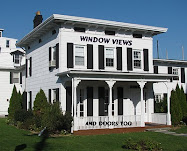The Gateway Arch, also known as the Gateway to the West, is an integral part of the Jefferson National Expansion Memorial and the iconic image of St. Louis, Missouri. It was designed by Finnish-American architect Eero Saarinen and structural engineer Hannskarl Bandel in 1947.
The cross-sections of its legs are equilateral triangles, narrowing from 54 feet (16 m) per side at the base to 17 feet (5.2 m) at the top. Each wall consists of a stainless steel skin covering a sandwich of two carbon steel walls with reinforced concrete in the middle from ground level to 300 feet (91 m), with carbon steel and rebar from 300 feet (91 m) to the peak. The interior of the Arch is hollow and contains a unique transport system leading to an observation deck at the top. The interior of the Arch also contains two emergency stairwells of 1076 steps each, in the event of a need to evacuate the Arch or if a problem develops with the tram system.
The Arch is the tallest monument in the United States at 630 feet.
Construction began February 12, 1963 and the last section of the Arch was put into place on October 28, 1965.
The Arch is a structure known as a catenary curve, the shape a free-hanging chain takes when held at both ends, and considered the most structurally-sound arch shape. The span of the Arch legs at ground level is 630 feet, the same as its height.
Each year, approximately a million visitors ride the trams to the top of the Arch. The trams have been in operation for over 30 years, traveling a total of 250,000 miles and carrying over 25 million passengers.
The Arch weighs 17,246 tons. Nine hundred tons of stainless steel was used to build the Arch, more than any other project in history.
The Arch was built at a cost of $13 million. The transportation system was built at a cost of $3,500,000.
In order to ensure that the constructed legs would meet, the margin of error for failure was 1/64th of an inch. All survey work was done at night to eliminate distortion caused by the sun's rays. Since the Arch was constructed before the advent of computer technology, relatively crude instruments were used for these measurements.
The Arch sways a maximum of 18" (9" each way) in a 150 mph wind. The usual sway is 1/2".





























.jpg)









10 comments:
It is an amazing human made structure that I've never seen. Like the light on the arch wall. Did you go to the top Erin?
Have a great weekend.
Wow. That is an imposing structure. You did an incredible job of photographing it. Makes me want to look up other images of it, actually, as I've never seen it.
The thumbnail of this on the reader really caught my eye. Well-done.
:-)
A wonderful arch highlighting the skyline.
always love your shots!
Oh Erin, that's fabulous!
This is really very impressive; both the Gateway Arch look and the information you provided us on it. You have taken spectacular photo of it. Wonderful perspective as well as the light you caught.
beautiful perspective of an amazing building!
That is the most fascinating I have seen in ages! Both the arch and your photo! Simply wonderful!
Wow! What a fantastic shot!
Janice.
Thanks for all this fascinating information about the Arch. I really like the perspective of your photo as well.
Post a Comment